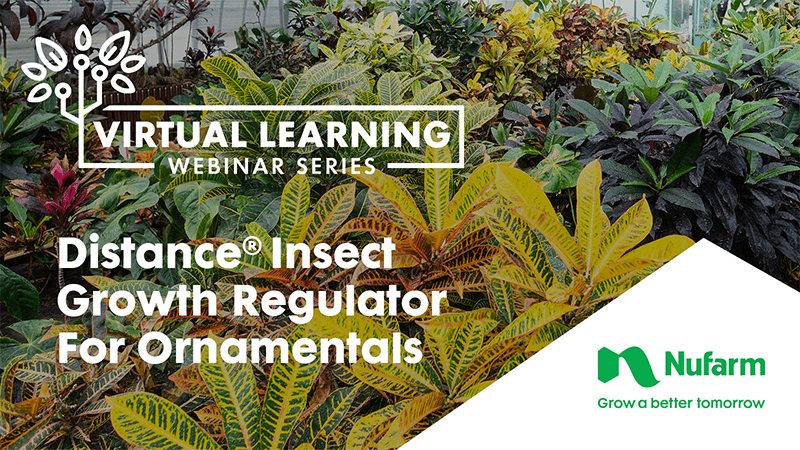How the “New AI” is Poised to Revolutionize Agriculture
The agricultural industry has been undergoing a transformation in the last decade, with the arrival of several new technologies (indoor vertical farming, genetic modification, and automated machinery and robotics). Artificial intelligence in particular offers potential solutions to long-standing productivity and sustainability issues and can generate new and innovative solutions without disrupting existing farming operations with complex installations or sensors.
In a 2018 report by the World Economic Forum, the authors highlight the transformative potential of AI. They argue that it has the power to revolutionize agriculture to an even greater extent than the mass farming methods of the 20th century. In this story, we explore how a series of recent breakthroughs in AI, particularly Generative AI, Large Language Models (LLMs), and Reinforcement Learning, are going to change the agricultural landscape.
Help Creating Knowledge Graphs
A knowledge graph (KG) is a way to structure data to represent real-world entities and their relations. This way information and knowledge can be distilled and stored in a semantic and resourceful manner that highlights key relationships and makes access to key insights easier. In agriculture, KGs can significantly bridge the gap between farming and research [some approaches already being proposed for instance, see here]. They could potentially offer improved access to better treatments based on the latest body of research available in the form of academic articles. This would enable farmers to make quicker and more accurate decisions, taking into account latest insights often buried in silos research activities published online.
Large Language Models (LLMs) are revolutionizing the way we create knowledge graphs in many fields by filtering vast amounts of information and representing them as knowledge graphs automatically. This would accelerate bridging the gap between industry and research by allowing uncovering of important relationships and insights buried within scattered collections of research articles and bridge siloed efforts in discovering new solutions and relationships.
“Within a decade the pharmaceutical industry may be spending $50bn a year on AI to speed up drug development.” — The Economist
The sheer magnitude of knowledge available often leads to silos, but with Large Language Models, we can aggregate diverse datasets and eliminate redundant efforts. This not only streamlines research but also enables faster discovery of effective treatments for plant diseases. Additionally, farmers can benefit from access to these treatments, tailored to their specific field observations.
Biotech and healthcare have already embraced using Large Language Models for generating knowledge graphs according to an article recently published by The Economist, “Big pharma is warming to the potential of AI“.
Enhance Data Analytics to Improve Labor Productivity
“The most important, and indeed the truly unique, contribution of management in the 20th century was the fifty-fold increase in the productivity of the manual worker in manufacturing.” — Peter Drucker
The agricultural industry is constantly striving to improve efficiency of cultivation practices. An essential aspect of this pursuit is labor tracking, which involves monitoring workers’ activities to better allocate resources and enhance performance. Borrowing techniques in continuous improvement of labor productivity from the manufacturing industry, farmers can leverage AI and analytics to increase productivity and optimize crop production for instance by pinpointing areas where additional training may be needed, and identifying and mitigating potential hazards. Recent advances in AI can significantly improve generating an accurate digital twin of a farming operation including labor activities while also ensuring this is done ethically
Ask Data (Augmented Analytics) for Automated Analysis and Reporting
The high volume of data that the agricultural industry generates makes it difficult for humans to manually analyze and interpret; even if they collect the data manually and upload to a database the consolidation is a day-to-day struggle in many farms around the world. Therefore, it’s essential to adopt AI technology that can extract valuable real-time data insights and improve decision making. The “ask data” technology is a true game-changer, allowing automatic data analysis and report generation, business intelligence companies like tableau have already added an early version of these types of features to their products offering.
“Augmented analytics is the use of enabling technologies such as machine learning and AI to assist with data preparation, insight generation and insight explanation to augment how people explore and analyze data in analytics and BI platforms.” — Gartner
In agriculture, this technology enables farmers to gain insights from complex data trends without a need for having a dedicated data analyst or wait for software companies to improve their analytics offering, transforming the data into business intelligence and helping farmers make more informed business decisions on anything from labor allocation, pest control, and even to optimize supplies expenses. An article from IBM Business Analytics Blog titled “Ask and you shall receive: How an AI-powered data catalog can help you find & understand your data” discusses how an AI-powered data catalog can automatically analyze and generate reports from large volumes of data. This technology transforms raw data into actionable intelligence, enabling businesses to make more informed decisions.
Agent-Based Modeling for Growth Recipe and Planning Optimization
Agent-based modeling (ABM) is a powerful technique that can be used to simulate the behavior of complex systems. This enables farmers to test different scenarios and optimize their planning decisions based on the outcomes. The idea of growth recipes comes from the concept of a standard operating procedure (SOP), which sets out a stringent, predictable sequence of actions designed to ensure product quality. AI can help develop new and revised growth recipes to optimize crop production personalized for specific crop cultivar, climate, and soil conditions each farming operation has to deal with.
Optimizing growth recipes in agriculture can be achieved through the use of, for instance, reinforcement learning techniques. Google’s Deepmind has developed powerful models such as AlphaGo, AlphaSim, AlphaFold, and AlphaTensor showing how AI with reinforcement learning methods can create human level or superhuman performance in playing games and simulating and predicting outcomes in very complex environments. The same methods can be applied to automate the optimization of irrigation, lights, and other controllable inputs based on growth signals.
“AI has the power to revolutionize agriculture to an even greater extent than the mass farming methods of the 20th century.” — World Economic Forum Report 2018
By running game-like simulations using a digital twin of a farm based on data collected from sensors and AI-enabled software, these models offer a streamlined approach to significant leap in boosting crop cultivation. In particular, labor planning and resource allocation refinement can play a crucial role in achieving significant improvements in agricultural practices. A recent paper titled “A Learned Simulation Environment to Model Plant Growth” highlights how a simulator was developed to quantify the effect of changes in environmental parameters on plant growth, helping to inform labor allocation decisions.
Overcoming Data Limitation
Data augmentation is a game-changing strategy for dealing with the challenge of lack of high-quality data which is necessary for training machine learning models. By expanding training data diversity, it supercharges model performance in various applications. In medical imaging, techniques like rotation, scaling, and flipping are used to enhance deep learning models’ disease detection abilities. These methods combat overfitting and boost accuracy by exposing models to a wider range of variations. In robotics, data augmentation creates diverse training scenarios, improving models for real-world performance in tasks like object recognition and navigation.
AI-based data augmentation and computer vision are enhancing agricultural applications, particularly in disease detection and robotics. Data augmentation increases the diversity of data available for training models, improving their performance without collecting new data. For instance, these methods have been used to enhance machine vision systems for tasks such as insect pest detection and multi-class plant disease detection. Similarly, advances in these techniques are also relevant in the field of agricultural robotics designed for tasks like crop monitoring, weeding, and harvesting.
“It is estimated that 60% of the data used in AI and analytics projects will be synthetically generated by 2024.” — Gartner
AI is not only able to augment data to enhance diversity of existing data, it can augment sensors themselves potentially replacing the need for expensive sensors in certain applications. We call this sensor augmentation a method that creates output from one sensor using data from other sensors. An example of this is seen in Meta AI’s DINO model which was recently open-sourced and made available to the public. In agriculture, similar concepts could be applied to use sensor data collected from farms (like temperature, humidity, soil moisture) to augment other sensory data or create new types of data which are important for farming enhancement. This could potentially enhance the capabilities of AI models in detecting diseases, predicting yields, or controlling robotic farm equipment, leading to innovative solutions in precision agriculture.
Conclusion
AI’s transformative power is no longer a prospect for the distant future; it’s a pressing reality reshaping the agricultural industry today. As we’ve discussed, from knowledge graphs to agent-based modeling, AI offers unprecedented tools to address the myriad challenges farmers face—environmental, social, and economic.
But recognizing AI’s potential isn’t enough. Now is the time for action. If you haven’t already, begin the journey of integrating AI into your operations. Whether it’s adopting simple data analytics tools or implementing advanced robotics, take that critical first step. The competitive edge and long-term sustainability of your operations depend on it.
The future of agriculture, powered by AI, offers a bright prospect of efficiency, sustainability, and profitability. Now, it’s up to all of us to take the steps needed to realize this potential.
For More Information
- World Economic Forum. (2018). Harnessing Artificial Intelligence for the Earth. Retrieved from https://www3.weforum.org/docs/Harnessing_Artificial_Intelligence_for_the_Earth_report_2018.pdf
- Anwar, S., & Basciano, J. (2020). Harnessing artificial intelligence (AI) to increase wellbeing for all: The case for a new technology diplomacy. Journal of Physics: Conference Series, 1756(1). Retrieved from https://iopscience.iop.org/article/10.1088/1742-6596/1756/1/012010/pdf
- The Economist. (2023, July 13). Big pharma is warming to the potential of AI. Retrieved from https://www.economist.com/business/2023/07/13/big-pharma-is-warming-to-the-potential-of-ai
- Google AI Blog. (2021, May). KELM: Integrating Knowledge Graphs with Language Models. Retrieved from https://ai.googleblog.com/2021/05/kelm-integrating-knowledge-graphs-with.html
- ScienceDirect. (2023). Artificial intelligence, machine learning and deep. Retrieved from https://www.sciencedirect.com/science/article/pii/S2665972721000283
- Arxiv. (2022). Self-Supervised Learning from Video with Lagrange Multipliers and Squared Temporal Contrast. Retrieved from https://arxiv.org/pdf/2212.03155.pdf
- Facebook AI. (2023). DINO V2: Transformer-based Vision Models Learn to See Depth and Motion from Videos. Retrieved from https://ai.meta.com/blog/dino-v2-computer-vision-self-supervised-learning/
- MDPI. (2023). A Deep Learning Enabled Multi-Class Plant Disease Detection Model. Retrieved from https://www.mdpi.com/2673-2688/2/3/26









